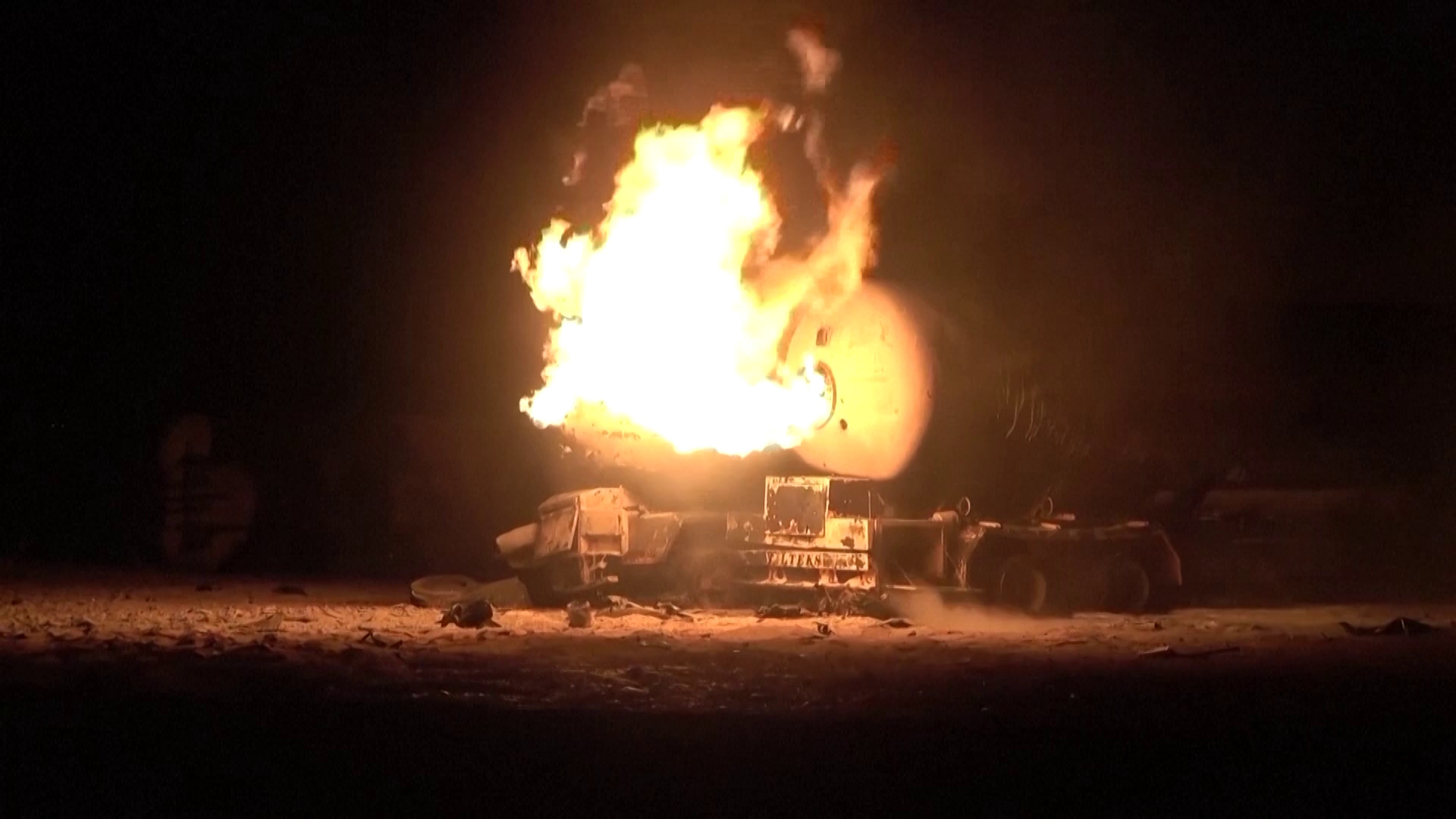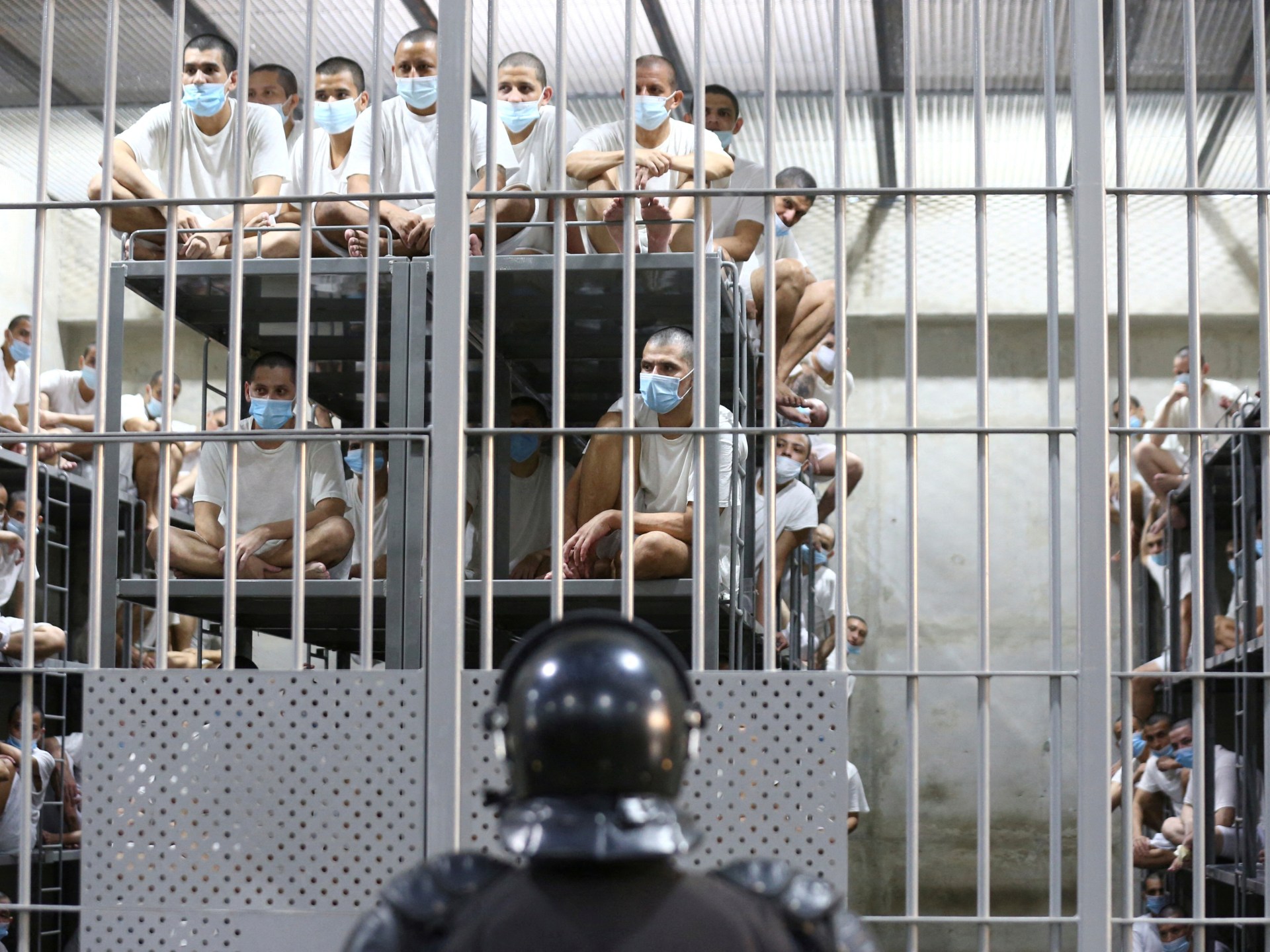Federal Judge James Boasberg said on Wednesday that US President Donald Trump’s administration could face criminal contempt of court for disobeying an order halting alleged Venezuelan gang members’ deportations if they refused to file a deposition.
Boasberg has given the US government one week to remedy its dismissal of his order by providing the deported men with the right to due process in court. The decision has been challenged by the Trump administration. The judge’s decision on Wednesday is just the latest in a long line of legal challenges Trump’s executive orders and actions face.
So, what does it mean to be held in contempt of court? What comes next? What would happen if the president steadfastly disregarded a court’s rulings?
What happened?
The Trump administration was prevented from using the Alien Enemies Act of 1798 to carry out deportations by Boasberg’s temporary restraining order late on March 15. The District of Columbia’s chief judge is Bosberg.
The Alien Enemies Act gives the US president the discretion to detain or deport non-citizens during wartime. Without a hearing, the president has the authority to carry out these deportations solely based on citizenship.
Boasberg also mandated that deportation flights en route to El Salvador turn around and return while issuing the restraining order.
Hours after this restraining order was issued, on the morning of March 16, El Salvador President Nayib Bukele claimed in an X post that his country had received 238 members of the Venezuelan gang Tren de Aragua and 23 members of the Salvadoran gang MS-13 from the US. Additionally, Bucele also posted a news item about Boasberg’s decision, which was titled “Oopsie… Too Late” and featured an emoji with a cry-with-laughter emoji.
The alleged gang members are being held in El Salvador’s Centro de Confinamiento (Centro de Confinamiento), or CECOT, a maximum-security prison.
In a post on March 18 on his Truth Social platform, Trump called Boasberg a “Radical Left Lunatic” and called for his impeachment. Chief Justice John Roberts, who criticized Trump’s impeachment claim, said that “impeachment is not an appropriate response to disagreement regarding a judicial decision.”
Boasberg also demanded that the government verify the flight information of the deported detainees’ aircraft, to determine whether it had the ability to turn around and return to the US in accordance with his instructions.
But on March 24, the US Department of Justice revealed that the Trump administration was invoking the “state secrets privilege” to avoid providing these details. When military or national security interests are in jeopardy, the doctrine is intended to be applied.
Boasberg testified at a hearing on April 3 to determine whether the Trump administration had violated the restraining order. The Justice Department denied this, saying the flights had already left the US by the time the restraining order was filed.
On April 7, the US Supreme Court granted the Trump administration’s request to deport immigrants, holding that they must first undergo a court hearing.
Judge Boasberg’s statement: what?
In a 46-page ruling on Wednesday, Boasberg wrote that the Trump administration’s actions were “sufficient for the court to conclude that probable cause exists to find the government in criminal contempt”.
He claimed that despite his temporary restraining order, the US government had rushed the deportees to El Salvador before they could file a deposition challenge in court.
The Constitution forbids willful disregard of judicial orders, particularly by coordinate branch officials who have sworn an oath to support them, according to Boasberg.
Boasberg also noted that Secretary of State Marco Rubio reposted Bukele’s post in which he had reposted the news snippet. According to Boasberg, “Defendants’ boasts indicated that they had purposefully and gleefully defied the Court’s Order.”
What does “contradictory in court” mean?
Contempt of court refers to the willful disobedience of the court of law or its officers.
Civil contempt, which occurs when a person violates a court order or interferes with court proceedings, can also occur, or criminal contempt, which occurs when someone intentionally or willfully disregards a court’s orders.
In the majority of cases, courts criticize those who are found guilty of civil contempt but don’t punish those who eventually complie with their orders.
Criminal contempt of court, on the other hand, carries a punishment spelled out in the statute books – a fine of up to $1, 000, a prison sentence of up to six months, or both.
According to Bruce Fein, an American lawyer with a focus on constitutional and international law, “failing to faithfully execute the laws as required by Article 2 of the Constitution would be an impeachable offence.” The US president has specific authority and responsibilities, according to Article 2 of the US Constitution. One such responsibility is that the president “shall take care that the laws be faithfully executed”.
What will the White House do after this?
According to Boasberg, White House officials can change their disregard for his restraining order to prevent being held in criminal contempt. They can do this by allowing the deported men to challenge their deportations in court. He set a deadline of April 23 for the White House.
In order to bring charges against the officials who chose not to turn the planes around and disobeyed his orders, the White House could contact them.
In this case, the Justice Department has appealed the ruling before the DC Circuit Court of Appeals.
According to Just Security, a non-partisan digital law and policy journal, the Trump administration has more than 190 legal challenges to its policies overall.
According to the US government, it committed an “administrative error” by deporting Salvadoran citizen Kilmar Armando Abrego Garcia, 29, to CECOT. On April 10, the US Supreme Court ruled in a 9-0 decision that Trump should facilitate Abrego Garcia’s return to the US. US District Judge Paula Xinis in Maryland announced on Tuesday that she would investigate whether Abrego Garcia had broken a law that the Trump administration had violated. Xinis claimed she has no intention of yet holding the government in contempt.
What happens if the White House refuses to obey a court’s orders?
Boasberg has threatened to do so by holding specific officials in contempt of a court.
However, the president has the authority to pardon officials who have been found guilty of violating the law. During his first term in 2017, Trump pardoned Joe Arpaio, a former county sheriff, who was found guilty of criminal contempt after he defied a court order asking him to stop racially profiling Latinos. The government can challenge a court’s decision in this case, as the White House has done in the White House.
The Supreme Court can be reached by that process of appeal.
But ultimately, the task of enforcing a contempt order falls on the US Marshals Service, which comes under the Department of Justice, a part of the Trump administration. Although it is expected that law enforcement officials adhere to court orders, this hasn’t always been the case.
Fein claimed that Trump could be held in contempt by the court.
Congress could also impeach him for violating a court order. However, the motion would need a two-thirds majority in the Senate and a majority in the House to be effective. The Senate currently has 53 Republicans, 45 Democrats, and two independents, while the House currently has 218 Republicans and 213 Democrats.
A Congress “currently controlled by Republicans, will not act unless the American people demand the same through phone calls, emails, and demonstrations”, Fein said.
Bottom line: Congress and ultimately the American people are now the ones to decide whether to continue with a government of laws or a government of men.
Has the Trump administration previously broken law?
Yes, it has – during Trump’s first term.
Trump signed an executive order enforcing a ban on entry for citizens of several Muslim-majority nations shortly after taking office in 2017. The ban was overturned after a number of federal judges issued orders to suspend it. However, Democrats and lawyers at airports complained that Customs and Border Protection (CBP) agents were going against these suspensions and detaining refugees and travellers from the Muslim countries.
In a 5-4 decision, the US Supreme Court overturned the travel ban, which had been suspended by several lower court decisions.
Trump isn’t the first president to find himself in a fight with the courts, despite his well-known conflicts with judges.
Some have come close to defying even Supreme Court orders.
Have US presidents previously disregarded Supreme Court decisions?
Possibly . The most notable example of this is former President Abraham Lincoln defying former Chief Justice Roger Taney. In 1861, Abraham Lincoln revoked a habeas corpus order to imprison people who he thought were sympathisers of the Confederacy. A detainee may file a lawsuit against their detention in court using a centuries-old common law principle known as Habeas Corpus. Chief Justice Taney held that Congress had the power to suspend the writ, not the US president. Quinn largely disregarded Taney’s opinion. However, Taney was “riding circuit” at the time, and he and his opinion were filed with the District of Maryland Circuit Court, not the US Supreme Court, and historians continue to debate the authority that Taney used to make his decision.
At the beginning of World War II in 1942, Democrat President Franklin D Roosevelt invoked a proclamation authorising the trial of eight German saboteurs at a military tribunal. The Supreme Court eventually supported the president’s policy, despite Roosevelt’s suggestion that he would proceed with it regardless of whether the Supreme Court believed him to be correct.
US presidents have also nearly defied the Supreme Court in some cases. In 1974, in the wake of the Watergate Scandal, former President Richard Nixon claimed that the concept of executive privilege allowed him to withhold sensitive information, such as communication between officials and tape recordings, from investigators. Nixon ultimately agreed with the Supreme Court, and the latter eventually agreed to comply with the court’s order shortly afterward. Nixon resigned two weeks after the decision was made.  ,
When his post-9/11 strategy for national security clashed with a Supreme Court decision regarding the treatment of prisoners held at Guantanamo Bay, the Republican president from 2001 to 2009. However, Bush eventually revoked his Supreme Court decision.
Presidents have also been called on to enforce Supreme Court contempt orders. After the governor of Arkansas supported the segregationists, President Dwight Eisenhower sent a thousand army soldiers to Arkansas in 1957 to enforce the Supreme Court’s desegregation ruling.
Presidents haven’t always been deferred to the Supreme Court.







